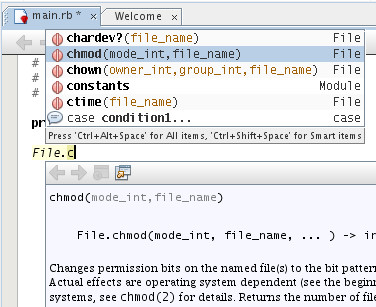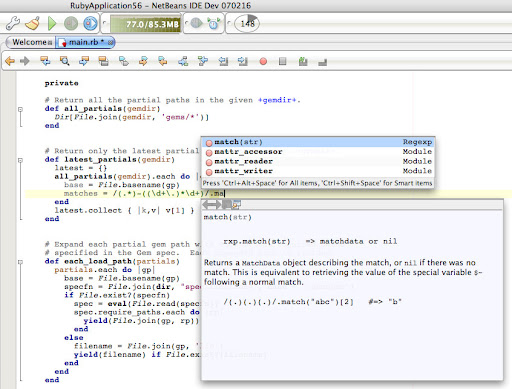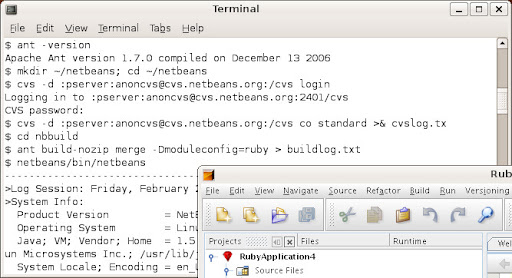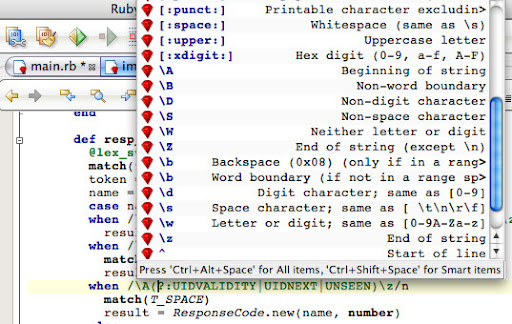WARNING: This blog entry was imported from my old blog on blogs.sun.com (which used different blogging software), so formatting and links may not be correct.
Tim Bray just posted an entry on his first experiments with the Ruby and NetBeans support and in particular, talks about the syntax highlighting. I was already planning on spending this week's screenshot on the highlighting features, so I'll use Tim's ape.rb source code and show you a few more details:

Notice the following:
- Notice how unused local variables are highlighted (see
dummywhich I inserted to make a point - that's not Tim's fault!). - Notice how the symbol under the caret gets highlighted along with all other uses of the same symbol! This is pretty useful when you're dealing with
blocks for example - it will show you that a local variable may be used unintentionally as a block variable and will get modified as a side effect. - Notice how methods calls are highlighted in bold. This is handy when you have a typo, and what you thought was a local variable read is actually a call
to an unbound method. - Notice how strings are lexed too. Here you can see that it's telling you (in red italics)
"\n"is not expected as an escape code - this is a single quoted String after all. - Embedded Ruby code within Strings -
#{ }- is properly shown as Ruby code. Occurrences highlighting and code completion works in these sections too.
Regarding the color choices, I should point out that these colors are consistent with the new colors in the Java support in NetBeans 6 - parameters are orange, fields green, unused items gray, and so on.
In doing this screenshot I noticed a couple of bugs I'm off to fix now!





